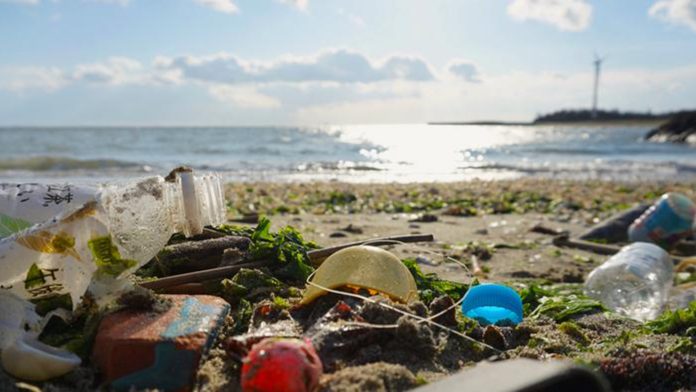Optical analysis and machine learning techniques can now readily detect microplastics in marine and freshwater environments using inexpensive porous metal substrates.
Techniques for detecting microplastics in water samples are essential for environmental monitoring but challenging, in part because microplastics resemble natural organic compounds derived from biofilms, algae, and decaying organic matter.
Existing detection methods generally require complex separation techniques that are time-consuming and costly.
The machine learning technique, developed by researchers at Nagoya University with collaborators at the National Institute for Materials Sciences in Japan, overcomes these barriers.
Separating and detecting microplastics
“Our new method can simultaneously separate and measure the abundance of six key types of microplastics – polystyrene, polyethene, polymethylmethacrylate, polytetrafluoroethylene, nylon and polyethene terephthalate,” explained Dr Olga Guselnikova of the National Institute for Materials Science.
The system uses a porous metal foam to capture and detect microplastics optically using a process called surface-enhanced Raman spectroscopy (SERS).
“The SERS data obtained is highly complex,” said Dr Joel Henzie of NIMS.
“However, it contains discernible patterns that can be interpreted using modern machine learning techniques.”
The unique potential of machine learning methods
To analyse the data, the team created a neural network computer algorithm called SpecATNet.
This algorithm learns how to interpret the patterns in the optical measurements to detect microplastics more quickly and with higher accuracy than traditional methods.
“Our procedure holds immense potential for monitoring microplastics in samples obtained directly from the environment, with no pretreatment required, while being unaffected by possible contaminants that could interfere with other methods,” stated Professor Yusuke Yamauchi of Nagoya University.
The researchers hope their innovation will greatly assist society in evaluating the significance of microplastic pollution on public health and the health of all organisms in marine and freshwater environments.
By creating inexpensive microplastic sensors and open-source algorithms to interpret data, they hope to enable the rapid detection of microplastics, even in resource-limited labs.
In addition, the researchers hope to expand the capability of the SpecATNet neural network to detect a broader range of microplastics and even accept different kinds of spectroscopic data in addition to SERS data.








